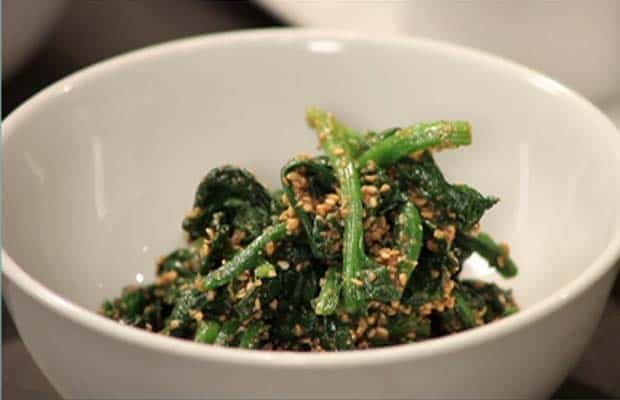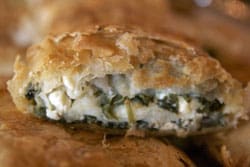Here’s our adaptation of several classic Asian wilted spinach dishes, usually served either before or alongside the main meal. This is easy to make, downright delicious but with an unusual twist in the flavors that will make it memorable for your guests. Enjoy the flush of spinach, because it is a short-lived season!
Here’s what could come out of your garden for this recipe – Spinach, Chiles and Sesame seeds!
- 1 pound fresh spinach rinsed well, lightly steamed and cooled
- 1 1/2 tablespoons Asian sesame oil
- 1 1/2 tablespoons rice wine vinegar
- 1 1/2 tablespoons minced fresh ginger
- 1/2 teaspoon sugar preferably raw
- 1 teaspoon hot red pepper flakes
- freshly ground black pepper to taste
- 2 tablespoons sesame seeds toasted
- Make the dressing ahead of time by combining the sesame oil, rice vinegar, ginger, sugar, hot pepper flakes and freshly ground black pepper. Mix well with a wire whisk, taste and adjust seasonings to suit your preference. Set aside to allow flavors to mingle, at least a half hour.
- Toast the sesame seeds in a small heavy pan, like cast iron, over medium heat. Stir constantly until they release their aroma and start to slightly darken. Remove, pour into a cool bowl and stir until cooled down to stop toasting, about 1 - 2 minutes.
- To wilt the spinach, wash in a sink full of water thoroughly to remove any residual grit or dirt, shake once or twice and add to a deep, heavy saute pan that has been heating over medium heat and cover until just wilted, about 1 - 2 minutes. Remove the lid, turn the heat to high and let the water evaporate while stirring with tongs, about 30 seconds to 1 minute. Remove spinach using tongs to squeeze out any excess liquid and place into a large serving bowl. Refrigerate until cool.
- Once cool pour dressing over spinach and toss several times to mix flavors well, then sprinkle toasted sesame seeds over the top.




 © 2024 Terroir Seeds | Underwood Gardens
© 2024 Terroir Seeds | Underwood Gardens